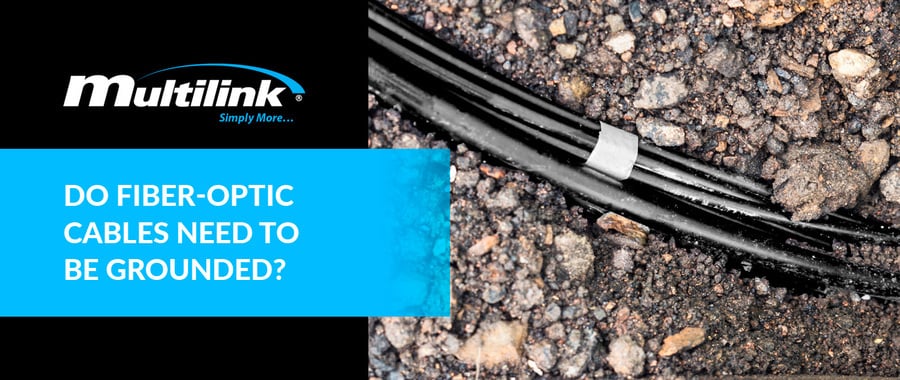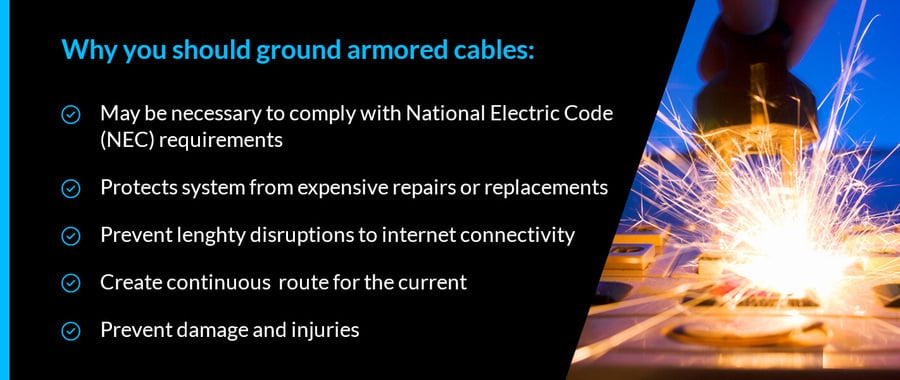{{ quickViewProduct.product_title }}
Stock ID
{{ quickViewProduct.product_stock_number }}
Product Features:
- {{ feature.product_feature_description }}
{{ option.product_option_title }}
{{ value.product_option_value_title }}

Grounding is a crucial safety step whenever you're working with electrical systems or components. A grounding wire discharges excess electricity to the ground or another nonconductive surface, significantly reducing the risk of electrocution, fires or injuries.
These days, fiber-optic cables have replaced traditional copper cables in many telecommunications applications. This technology consists of glass fiber strands housed inside an insulated casing known as a buffer tube.
Optical cables typically provide more bandwidth and can transmit data over longer distances without amplification as opposed to copper cables. They've become the preferred option for today's internet, cable television and telephone system applications.
Installers must choose between armored and non-armored cabling for any fiber-optic cable installation. The former is more common, as it contains a jacket of steel or aluminum to protect against cuts, abrasions and mechanical damage.
Many installers prefer armored cable in underground environments or structures with congested pathways. The armoring reduces the risk of cable damage from rodents, construction work and the weight of another cabling, leading to increased reliability and minimizing the risk of network downtime due to damage.

One disadvantage of using armored fiber-optic cable is the need for grounding. When using a non-armored or ADSS cable grounding is not necessary because it is not constructed with materials that are conductive. Typical non-armored OSP fiber can be used in an aerial or underground application, however, ADSS is only compatible with aerial installations and is not intended for underground use.
Although fiber-optic cabling systems do not transmit electrical power, the system's metal components could carry a current. Proper grounding and bonding are crucial for preventing damage and injuries caused by exposed wiring, lightning strikes, electric shock and system malfunctions. Bonding entails connecting metal pieces to create a continuous route for the current to follow minimizing the potential differences.
Besides promoting safety, grounding protects the connected systems and components from damage that may require expensive repairs or replacements. It can also prevent lengthy disruptions to a business's internet connectivity or phone system. Grounding and bonding may be necessary to comply with National Electric Code (NEC) requirements and local building codes.
Expose and connect the armor using a metal clamp (sometimes referred to as a “gator”) that will bite into the armor when tightened. Because the clamp “bites” into the armor, it now provides continuity between the clamp and the armor. This allows a wire to be connected via a post on the “gator” and connect to a buss bar, or ground wire. Typically the wire that connects to the gator and the ground is coated and has round lugs if connecting to a buss bar. If connecting to a solid number 6 copper wire using a split lug bonding clamp, a small amount of bare wire is exposed which allows it to be placed inside the clamp and tightened.
As an added safety feature, it is good practice to tape the area where the “gator” attaches to the armor. It will help keep the “gator” in place as well as provide additional integrity to the armor and jacket.
Do you need help grounding and bonding your fiber-optic cables? Multilink can provide complete construction and installation services that streamline the process. Feel confident that your telecom networks and systems will provide reliable and safe service.
Take the next step by calling us at 440-306-7646 or contacting us online today!
Back to Multilog